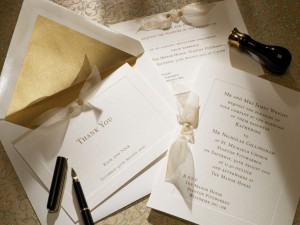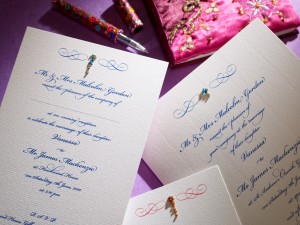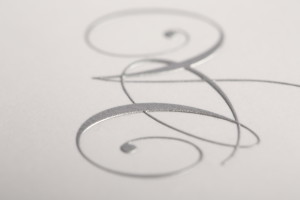Wedding Invitation Etiquette
Wedding invitations really do set the tone for your wedding. For many guests this will be the first impression of your wedding and will indicate the formality of the event.
It’s not every day most of us plan a wedding, so it can be easy to unwittingly slip up on wedding etiquette. Even the most untraditional of weddings require an element of etiquette to keep things running smoothly. So here’s our guide to the wedding etiquette of invitations.
Timing
Ideally you should send your wedding invitations around 6 – 8 weeks before the big day to give your guests ample time to respond. This also allows you to get an idea of the final head count and invite a few more guests should initial invitations be declined. Addressing and assembling wedding invitations may take more time than you think. Start to organize your invitations a month before your desired send date to avoid a last minute rush.
Outer and inner envelopes
If you want to protect your invitations from damage in the post you can put your invitation inside two envelopes. The outer envelope is purely for mail sorting purposes and the inner will match your invitations. Using two envelops is not essential, just a nice touch if your invites are delicate.
Writing your invitations
The address on a wedding invitation should be handwritten, printed labels spoil the look of your elegant invites. If you feel your handwriting may ruin the appearance of your invitations you may consider getting a professional calligrapher to finish them for you, especially if your wedding is more formal. If you can’t afford a professional ask around, do you have a bridesmaid with lovely handwriting?
To find a local calligrapher, ask your stationer or wedding planner for recommendations. Get your envelopes to the calligrapher at least three weeks before you need them. Make sure you have a neatly printed guest list prepared for him or her, and don’t forget to check addresses and spellings with guests.
Addresses
If you want your invites to be formal ensure you spell out all the words on the envelopes with no abbreviations. For example, “street” rather than “St.” If the address includes house numbers smaller than 20 spell it out if full also.
Names and titles
Avoid using nicknames or initials on your guests envelops. Write their names in full and be sure to include the appropriate social titles.
How do I address married couples?
Traditionally wives first names were omitted on invitations, however this is often viewed as old fashioned now. It is appropriate to include the first names of both husband and wife after their titles. If a husband and wife have different last names, the wife’s name should be written first. Connecting the couple’s names by the word “and” implies that they are married.
How do I address guests who are single?
For a single woman you can use either “Ms.” or “Miss”, however many prefer the former. If your guest has a long-term boyfriend/girlfriend it is polite to invite them also. If they do not it’s your choice as to whether to give them the option of bringing a guest. If you do not know the guests name simply include “and guest”, if you’re sure of who they will bring it is more personal to include that person’s name also on a separate line.
How do I address families with children?
Include the couples name only on an outer envelope to keep things simple and clear for the post office. If you want your invites to be formal write the full name of each guest on the inner envelope. Boys under the age of 13 should be addressed as “Master” and girls as “Miss”. If your invites are less formal parents and children’s first names can be used without titles.
How to assemble the invitation
If you’re including any enclosures such as local accommodation and guest list information, try to print these on the same or co-ordinating papers.
Place the invitation first, facing print side up. You may like to place a piece of tissue paper above this to prevent smearing. Stack all other inserts above this in order of size so that the smallest sits on top. Place the reply card under its envelope’s flap, and ensure this envelope is pre-addressed and stamped. Put everything into the envelope print side up, so that when guests open it they will first see the lettering.

Postage
If you need to mail your invitations make sure you take a completed invitation to the post office to have it weighed. Don’t just guess it, it may need more than one first class stamp. Weigh the reply card also to ensure you don’t over or under pay for this.


